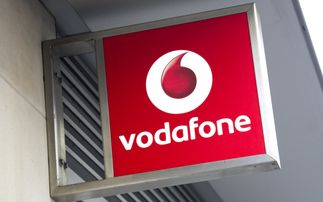Connectivity is central to enterprise and a defining aspect of how organisations are adapting to the demands of the digital marketplace and their ability to compete. Across Wi-Fi, wired, and mobile networks, we're having to transport huge quantities of data, more quickly, from more locations, more reliably.
The huge growth in SaaS and IaaS has placed the traditional model of corporate connectivity under phenomenal strain. Legacy networks had been designed for a world where most employees were office based and where that office needed to be connected to a single datacentre.
That world is long gone. Connectivity has had to evolve but in many organisations this process has been slow. The result is that increasing traffic levels have added to the growing burden of management complexity and security challenges. Enterprises are under pressure to resolve these challenges and reduce risk - at the same time as reducing costs. The Covid-19 pandemic has shone a spotlight on connectivity and has illuminated some tricky realities for organisations.
Connectivity conundrums
Recent research undertaken by Computing, in partnership with O2, has uncovered how businesses are coping with the connectivity challenges they presently face - and how they are resolving them. The single biggest connectivity challenge that business said they were facing was the demand from employees for greater flexibility and mobility. Prior to Covid-19, pressure was being placed on often aging connectivity infrastructure by employees demanding greater flexibility, but also by the economy and businesses as greater mobility and productivity became a necessity.
We are now learning to live with COVID-19, and it is widely accepted that we are unlikely to return to working life as it existed before the pandemic any time soon. Whilst offices are unlikely to disappear completely, as leases on expensive office space come up for renewal, many businesses will be assessing how they can reduce costs by using less space with a hybrid office/home-work model. This represents another nail in the coffin of more traditional network connectivity.
The reality of widespread remote working - multiple devices, scattered employees, and data all over the place - adds up to considerable worry for those responsible for securing these assets.
Counting the cost
Another widely reported connectivity challenge included the day-to-day grind, and cost of managing different suppliers for WAN, phone, mobile, IoT etc. Legally and commercially, multiple SLAs can be expensive to manage. Technically, the difficulties in managing and integrating multiple networks and dealing with multiple support desks means that time which should be spent on more strategic endeavours is lost.
Increasingly complex connectivity is also creating more cost. For most businesses, a substantial part of the allure of cloud computing was the reduction in both capital and operating costs. The reality is that the accumulating complexity that the cloud engenders has meant that many businesses have not seen the cost reductions they sought. Connectivity forms part of this cost.
The pandemic has also forced organisations to take a long hard look at the resilience of their operating model, as well as business continuity and the resilience of their employees.
Consolidate and simplify
All these areas are affected by connectivity, and challenges can be mitigated by integrating and managing their varying connectivity solutions through a consolidated platform. Why choose multiple connectivity vendors for mobile, WAN, office wireless etc. when you can simplify billing, support and management and ensure a single point of contact?
Simplification of connectivity is directly related to another process which was already ongoing in many businesses - the consolidation of security estates, driven by the need for better visibility and manageability - and subsequently better detection, mitigation and remediation.
Part of this consolidation process should include the security of mobile devices and data into that of connectivity. Not only can you procure all connectivity from one vendor, you can make that connectivity secure at the same time. This allows remote workers to communicate and collaborate without placing confidential data at risk, enabling remote working to scale productively.
The savings on the renewal of multiple support contracts across communications and security estates should be significant and the costs of management much lower. Vendors should provide security certification to enable the consolidation of mobile security, with confidence that data assets will be as well, if not better protected than when done so with the typical patchwork of endpoint security measures.
The consolidation of different aspects of connectivity is a crucial component of the move to a more agile - and resilient - business model. As organisations transform their infrastructures into flexible, smartly orchestrated multi-cloud hybrid estates, consolidated connectivity enables them to control costs and enhance the security and resilience of their enterprise.
Find out more about why consolidating your connectivity needs will lead to a more flexible and secure business, with our dedicated white paper.
















